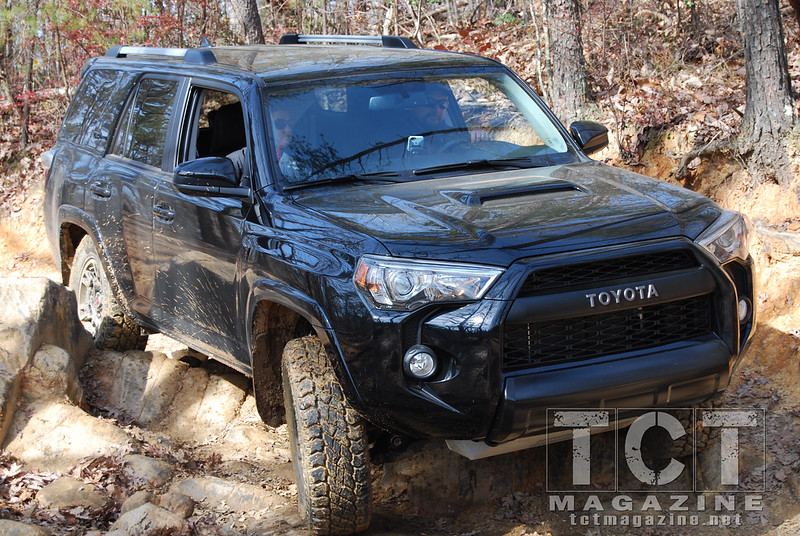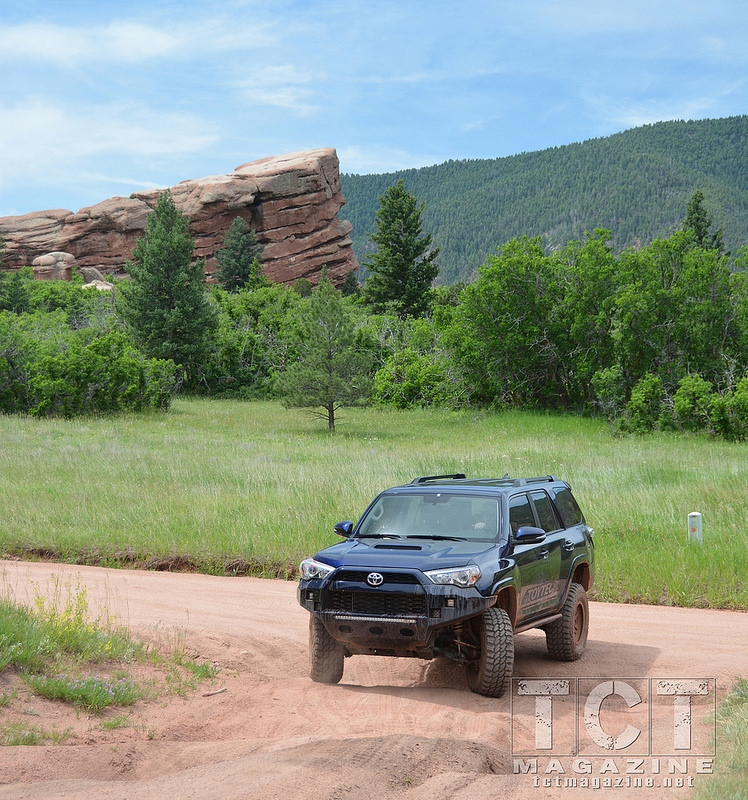1st Generation (1984–1989) 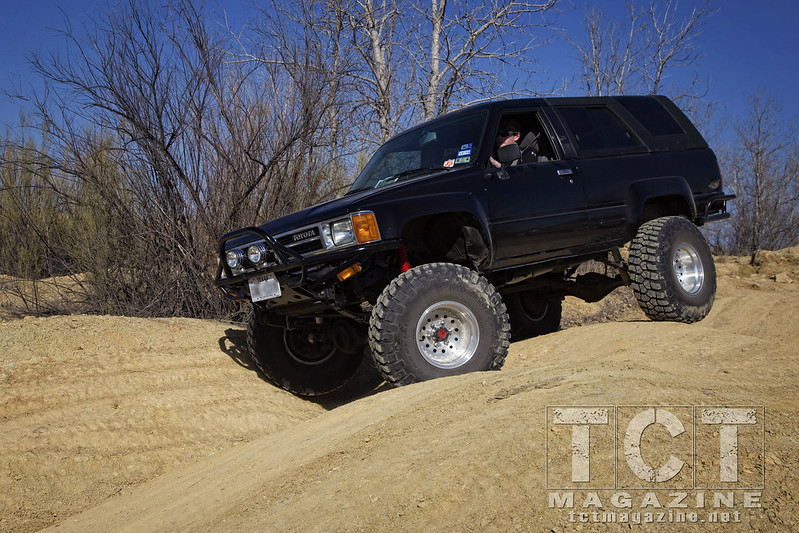
The first generation 4Runner was introduced in 1984 as a 2-door 4WD SUV with a solid front axle, removable fiberglass shell over the rear section, and an inline 4-cylinder 2.4L engine. It looked as if Toyota had converted their pickup truck into a sort of semi-convertible wagon. An optional upgraded SR5 model included a backseat for hauling passengers.
Toyota’s timing for bringing the 4Runner to market was appropriate as other truck manufacturers were introducing mid-sized SUVs in the mid-1980s. To differentiate itself from the competitors, Toyota boasted in magazine ads about the 4Runner having the highest ground clearance of any small SUV and a removable top.
The 4Runner went through some major evolution stages starting in 1985 when Toyota replaced the original engine with a fuel-injected version, and again in 1986 with the replacement of the solid front axle with independent suspension while continuing with the leaf spring rear suspension. For the latter half of 1986 to 1987, Toyota came out with the SR5 Turbo model. Offering this optional turbo-charged engine, coupled with an automatic transmission as standard, was deemed as an attempt to make the 4-cylinder seem more powerful in lieu of a V6, while preserving the engine’s lighter weight. Toyota replaced the 3-segmented grill with a less busy looking 2-segmented grill. For 1988, an optional 3.0L V6 engine replaced the turbo 4-cylinder. Throughout the generation lifespan, the manual transmission was standard for most model line-ups.
2nd Generation (1989–1995) 
It wasn’t until the second generation 4Runner, introduced as a 1990 model, that Toyota equipped the 4Runner with 4 doors and made the SUV with a full metal shell. Cargo space increased and the truck was now offered in a RWD version. The 4Runner was now more distinguishable from the pickup. A 2-door model was still available for 1990 and 1991, but by 1992, Toyota had dropped it from the U.S. market.
In a 1989 magazine ad, Toyota marketed the introduction of the 4 door 4Runner as the means for accessing the gift of the great outdoors--a gift that can now be shared with the family. The improved interior, optional shift-on-the-move 4WD, and rear coil springs replacing leaf springs were certainly attractive features, but the adored removable top was absent. Toyota touted “reliability” in their marketing campaign--clearly a clever move at the time as some automobile manufacturers were quickly gaining a reputation for poor reliability.
Leather became a trim option in 1992 and the pocketed headlights were replaced with a more flush aero design, and power steering is now standard on all models. The RWD version was dropped for 1993. By 1994, Toyota had upped the ante on options by offering an 8-speaker CD audio system, anti-lock brakes, and a sunroof. This marked the transition of the 4Runner to being more than just a roomy off-road vehicle as Toyota responded to the sudden surge in SUV sales in the U.S. The Jeep Grand Cherokee and Ford Explorer were gaining in market share as urban demand increased. For image-conscious Americans, the SUV was more of an en vogue family vehicle--deemed a notch above the minivan. For those who appreciated the finer things in life, a more luxurious trim was desired. Toyota responded in 1995 with the Limited, featuring wood trim, leather, and designation badging. This was the final year of the second generation 4Runner.
3rd Generation (1995–2002) 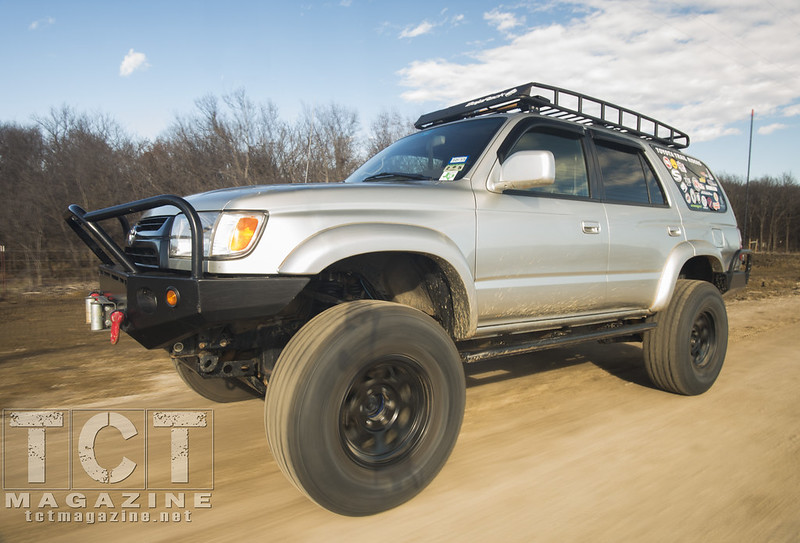
Toyota enlarged the 4Runner for the 3rd generation model with a complete redesign of chassis and body, thus breaking away from the sharing a chassis with the pickup. A renewed focus on comfort and safety helped propel the model to increased demand and higher safety star ratings. The RWD drivetrain returned. Manual transmission was still standard on the base and SR5 models. The 4-cylinder, standard for the Base model, increased in displacement to 2.7L and the V6 to 3.4L. Convenience features included a new lift-up tailgate, optional side-step rails, improved seats, improved center-console design, and greatly improved suspension. By now, Toyota’s reputation for reliability is more recognized than ever before. The improved vehicle design coupled with Toyota’s expanded reputation resulted in an increase of over 30% in 4Runner sales for 1996.
Up through the 2000 model, Toyota continuously made convenience, comfort, handling, and performance improvements to numerous areas as they sought to respond to customer feedback. In 2001, the Base model was dropped and some significant changes took place affecting both on and off-road handling. In an effort to revise the anti-lock braking system Toyota introduces Vehicle Skid COntrol, Electronic Brake Force Distribution, and A-TRAC (Active Traction Control). The A-TRAC technology is what makes 4WD Toyota trucks perform so well in 4-wheel low under light acceleration.
4th Generation (2002–2009) 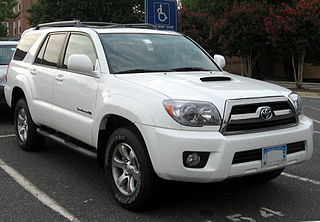
These technologies carried forward into the 4th generation 4Runner, which was based on the Land Cruiser Prado 120 platform. For 2003, Toyota introduced the next generation 4Runner in a larger body style exhibiting a design change that was hardly reminiscent of previous 4Runner models. The larger engine bay was fitted with either a 245 HP V6 VVT-i as the standard engine producing 283 lb-ft of torque, or an optional 4.7L V8 engine producing 235 HP and 320 lb·ft of torque. The V6 was coupled with a 4-speed automatic while the V8 was coupled with a 5-speed automatic--a first for the 4Runner. While the V6 models featured shift-on-the-fly 4WD, the V8 models came with full-time 4WD.
Toyota reverted to offering 3 trim levels, but now the SR5 was the base model. Between the SR5 and Limited editions was the new Sport Edition. It came with a hood scoop, larger front brake calipers and rotors, and a liquid shock system called X-REAS (X-Relative Absorber System) designed to reduce body lean in turns. Despite what looked to be a street performance truck, Toyota marketed the off-road capabilities of the Sport Edition in magazine ads. The Limited was loaded with luxury and easily topped the $40K price point.
In 2005, the 4-speed automatic for the V6 was replaced with the 5-speed automatic. The V8 received VVT-i, thus increasing the engine power to 270 HP and 330 lb·ft of torque. At 7,200 lbs of towing capacity, it was one of the most powerful mid-sized SUVs available.
Just as the 3rd generation lasted 7 years, so did the 4th generation 4Runner.
5th Generation (2010–present)
For 2010, Toyota introduced the largest 4Runner yet. In recent years, other manufacturers have abandoned the truck-on-frame architecture to appease demand for fuel efficiency and ride comfort. Toyota continued with the formula of a rugged, yet versatile, SUV with the 4Runner, allowing for the now-larger Highlander to serve the purpose of the efficiency and softer handling family hauler.
A new 4.0L V6 engine featuring Dual VVTi, capable of producing 270 hp and 278 Ib-ft of torque became the standard engine. An optional 2.7L L4 engine was available for 2WD models, but later cancelled due to low demand. The V8 previously available in the 4th generation 4Runner did not carry forward. While Toyota touted the improved HP and fuel efficiency of the new V6 as the reason for dropping the V8, the towing capacity of the new V6 came in 2,000 lbs under what the V8 could tow.
The SR5 and Limited editions offer an optional integrated 3rd row seat--a first for the 4Runner. The middle trim model was renamed as Trail Edition, and boasts savvy features that are attractive to outdoorsy and off-roading types: a rear axle locker, a slide-out rear deck, and black exterior grill and trim.
A major facelift was introduced for 2014 with LED headlights, and a dramatically more aggressive front facia that makes one wonder if Toyota is trying to get the 4Runner included in the next Transformers movie. Front seats were redesigned to allow for more seating space in the 2nd row. Dashboard features and interior styling improved, as well as improved audio and smartphone integration technologies.